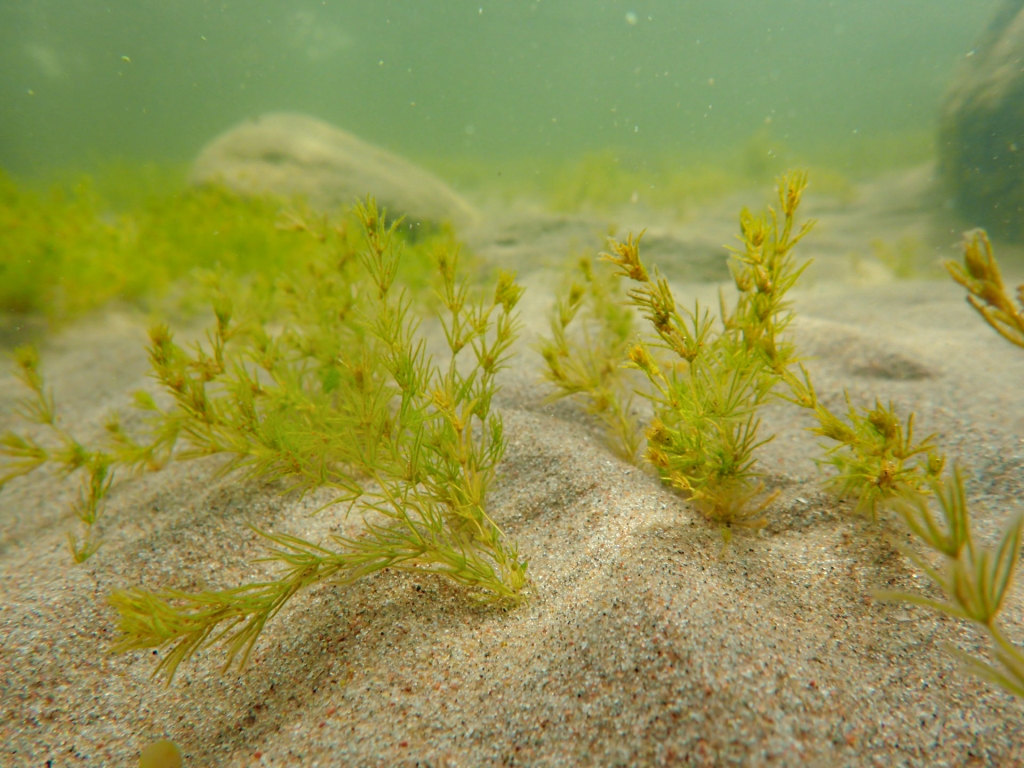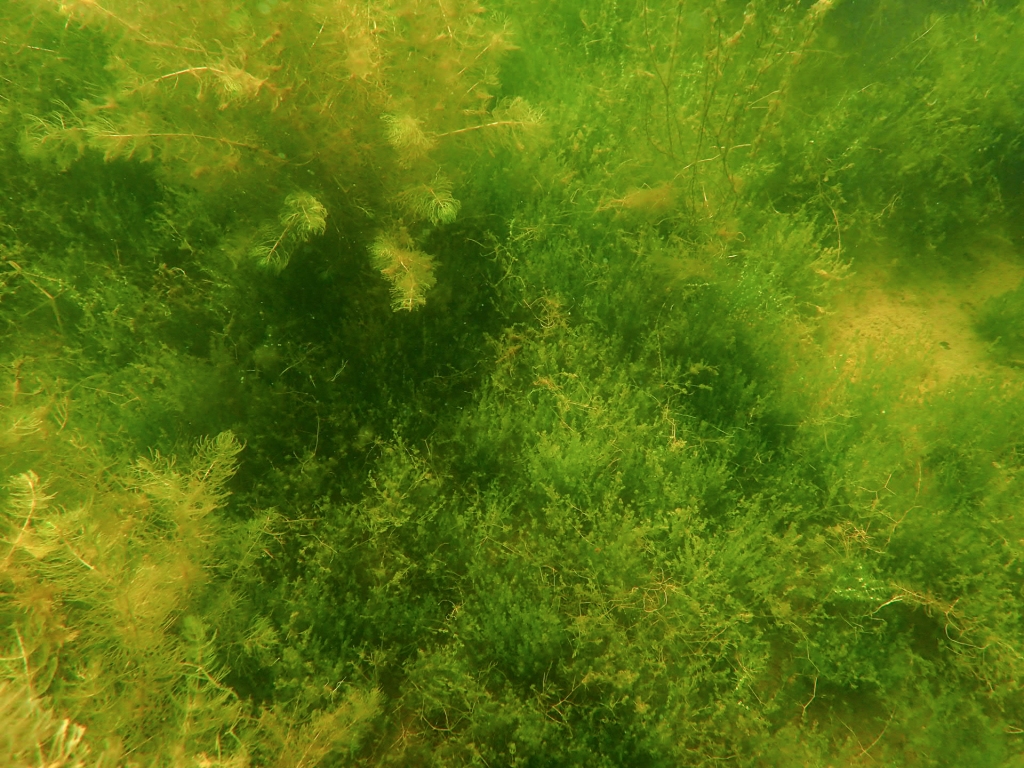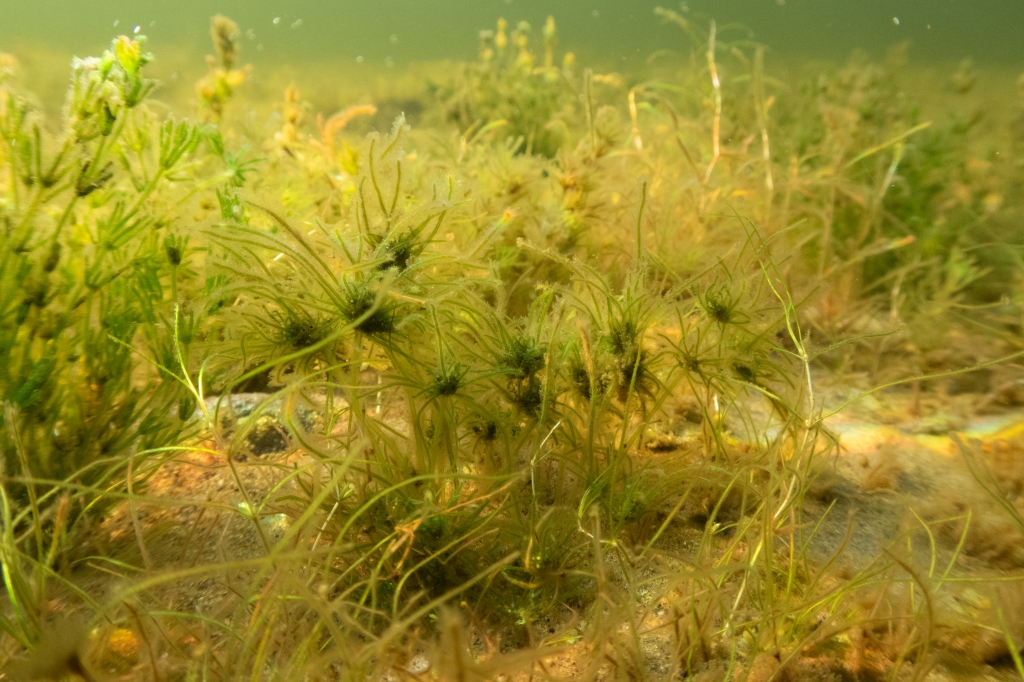Stoneworts, or Charales in scientific terms, is an order of green algae that is commonly found in the northern Bothnian Bay. They may look like ordinary vascular plants with stems and branches but are in fact algae. They can be found in freshwater, such as lakes, ponds, and rivers, as well as in brackish waters worldwide. Their looks are certainly a bit special and could be likened to a very small and thin “Christmas tree”. They consist of a stem divided into segments of internodes with branches organized in a ring, between the internodes; some species have a layer of bark on the stem and branches. Spines, short to long and/or in the papilla form, may also be occurring along the stem, under the branches between the internodes (stipules), and along the branches (bracteoles). Another often visible feature of the Charales are their sex organs located on the branches. The female oogonium are usually oval and slightly larger than the male, circular antheridium. The species of Charales may either be monoecious, meaning they have both male and female sex organs on the same plant, or dioecious when sex organs are on separate plants.

(Photo by Petra Pohjola, County Administrative Board of Norrbotten)
In the northern Bothnian Bay, ten species of Charales have been found so far. They belong to three genera, namely Chara, Nitella and Tolypella.
The species of the Chara genus most often have bark (the exception is Chara braunii (Braun’s stonewort) and more or less of spines, depending upon species. Chara aspera (Rough stonewort) is the most commonly occurring species. It may be found in a wide range of different habitats and often form extensive “lawns” on the bottom of the bay.

(Photo by Petra Pohjola, County Administrative Board of Norrbotten

(Photo by Petra Pohjola, County Administrative Board of Norrbotten)
The genus of Nitella is distinguished by species having no bark, they all have a transparent appearance. Nitella flexilis (Smooth stonewort) and Nitella opaca (Dark stonewort) are probably the most commonly occurring Nitella species within the northern Bothnian Bay. The two species can be very difficult to differentiate and are usually reported as a pair.

(Photo by Linnea Bergdahl, County Administrative Board of Norrbotten)

(Photo by Petra Pohjola, County Administrative Board of Norrbotten)
Another Nitella species occurring in the northern Bothnian Bay is the Nitella wahlenbergiana. It has a very delicate and beautiful appearance, and often appear in places with freshwater conditions, such as estuaries.

(Photo by Petra Pohjola, County Administrative Board of Norrbotten)
The last genus is the Tolypella. One species of this genus may be found in the northern Bothnian Bay is the Tolypella nidifica (Bird’s nest stonewort). It certainly lives up to its common name. If you look at it, you can easily see the messy “heads” of the plant resembling bird’s nests. The species is often found in more exposed areas, where wind and waves may be slightly stronger.

If you want to read more about the stoneworts, below are two informative publications about them (in swedish):
Blindow, I., Krause, W., Ljungstrand, E. & Koistinen, M. 2007. Bestämningsnyckel för kransalger i Sverige. [Key to the Swedish species of charophytes] – Svensk Bot. Tidskr. 101: 165-220. Uppsala. ISSN 0039-646X
Tolstoy, A. & Österlund, K. 2003. Alger vid Sveriges Östersjökust – en fotoflora. ArtDatabanken, SLU, Uppsala.
If you want to know more about the species of the SEAmBOTH area, see species guides on the Results page!
Written by: Linnea Bergdahl, County Administrative Board of Norrbotten

